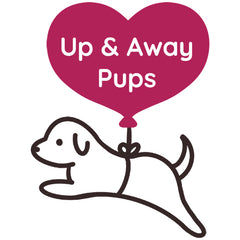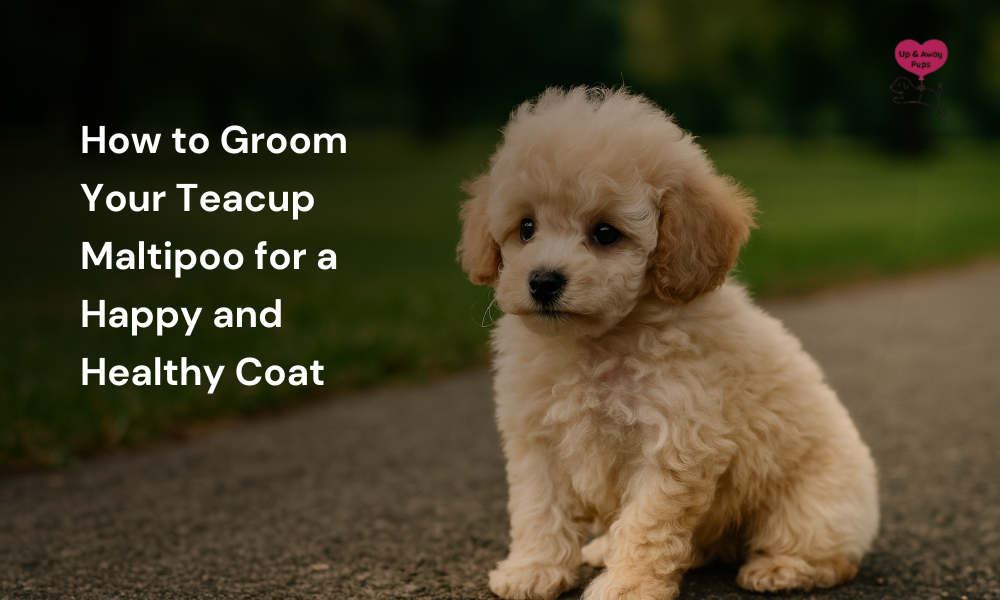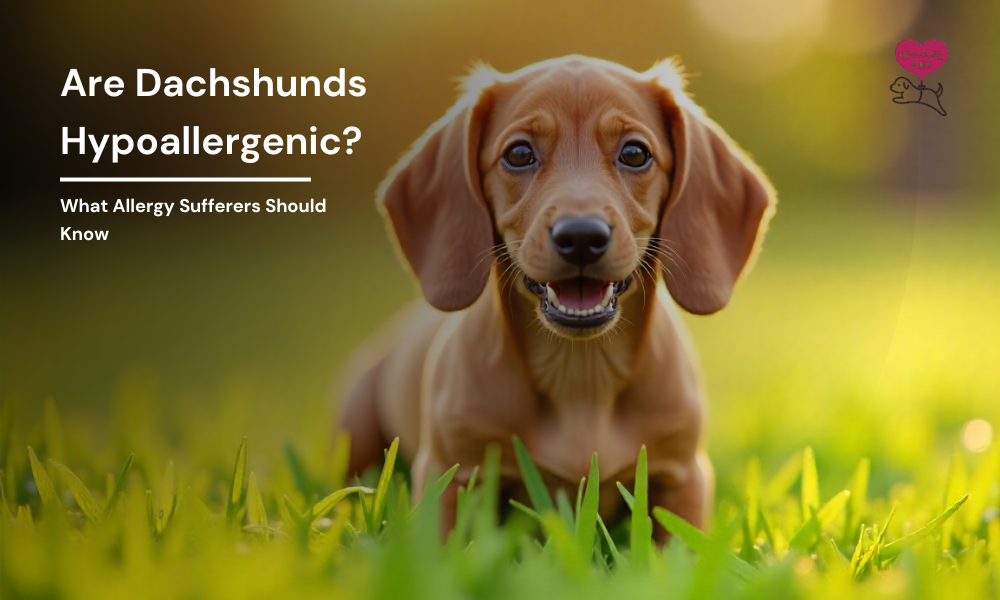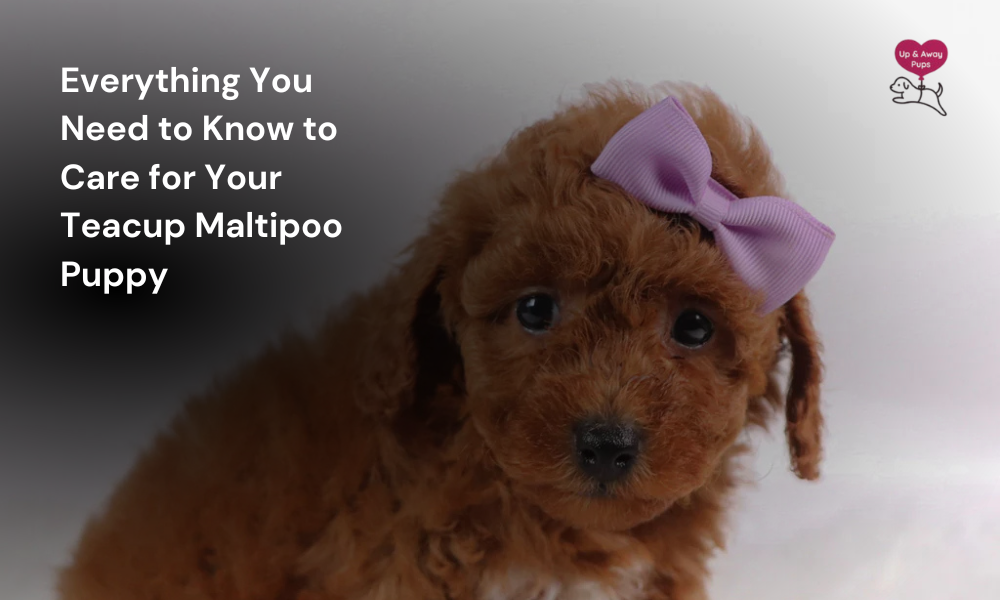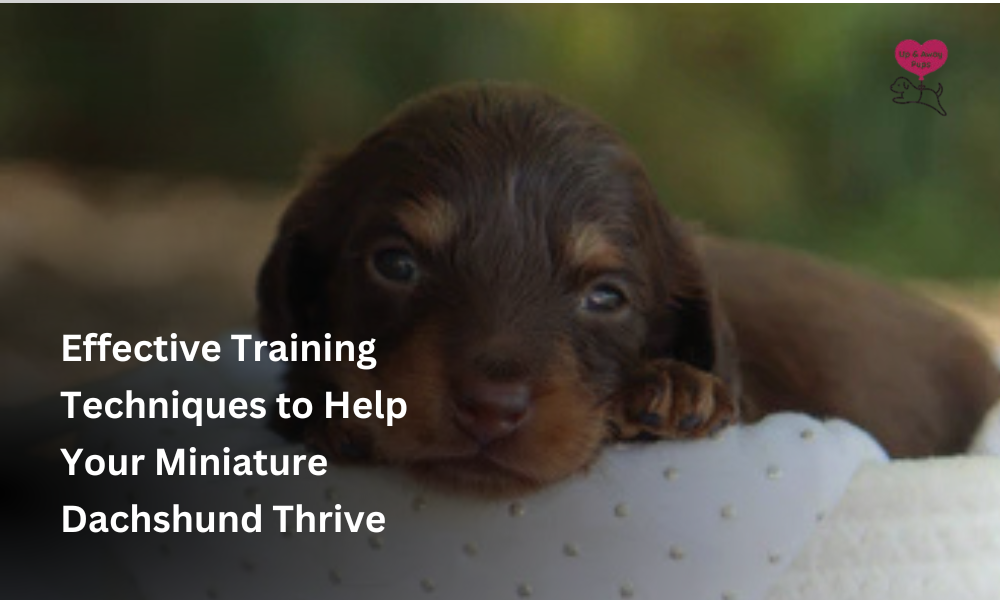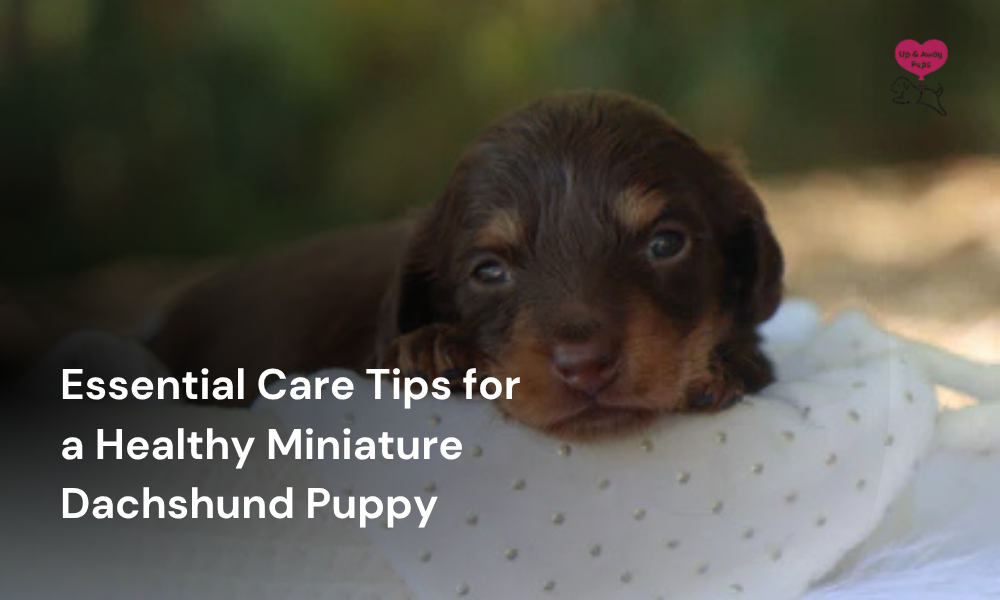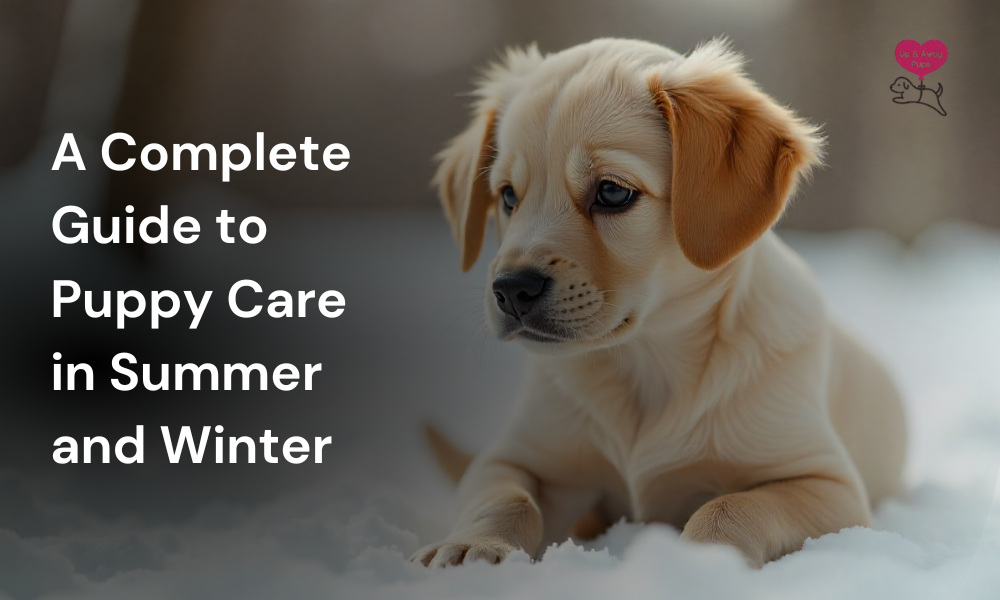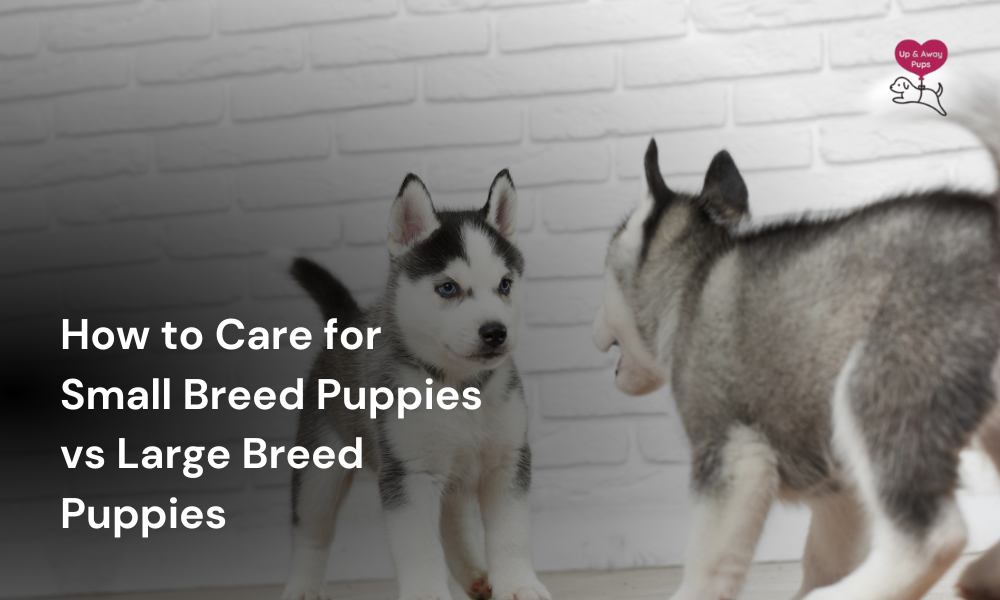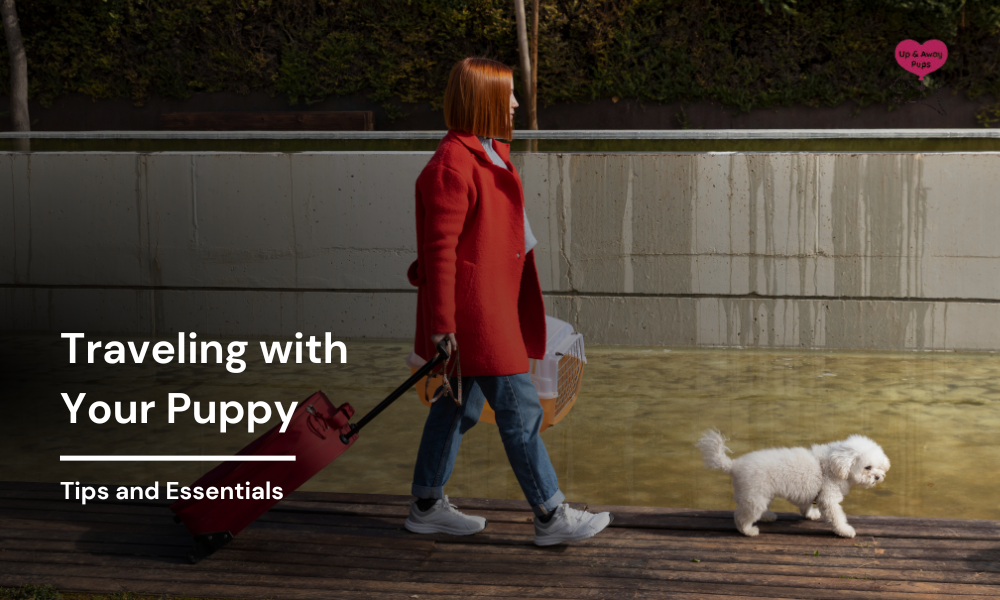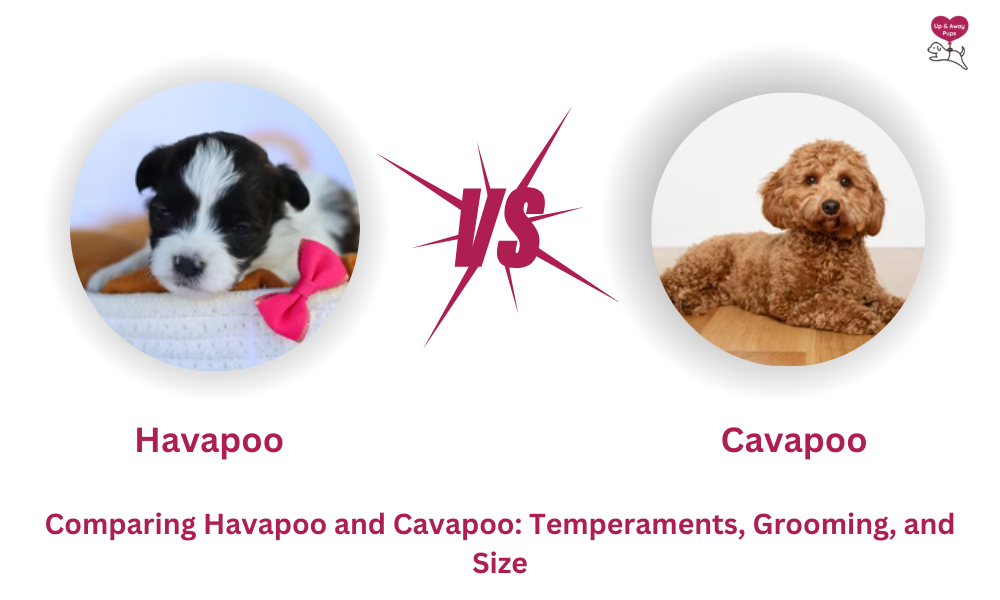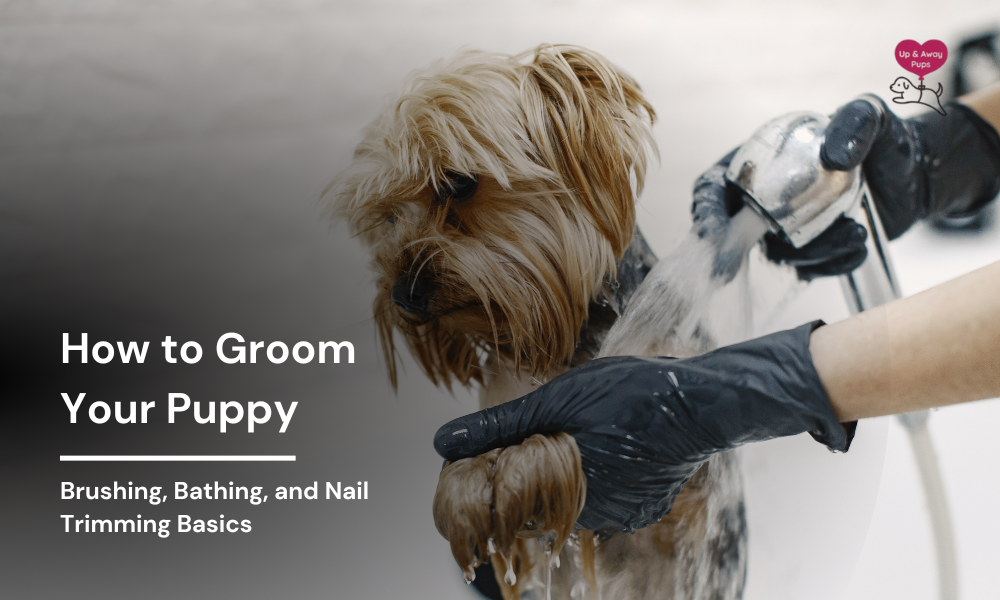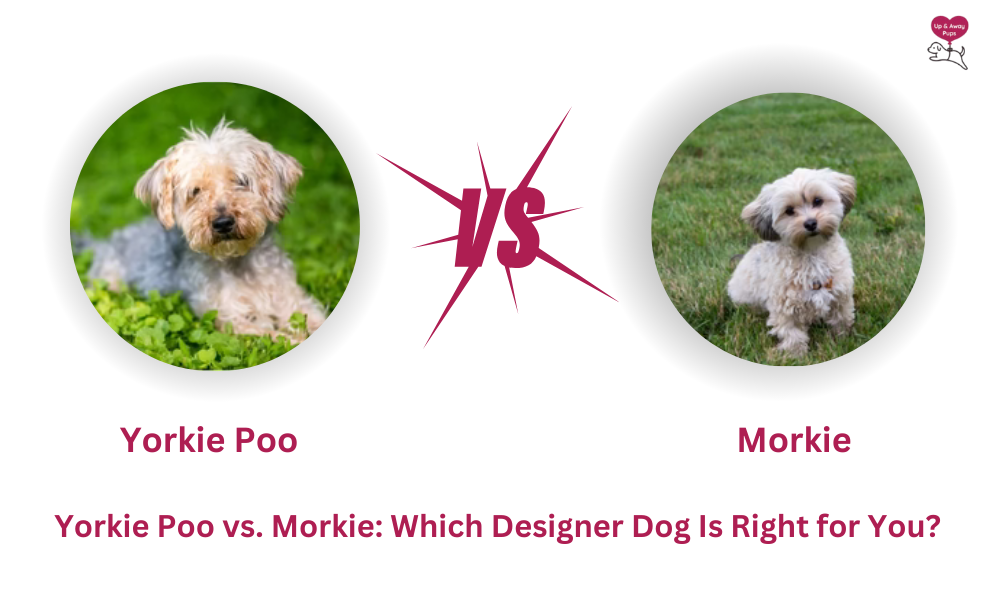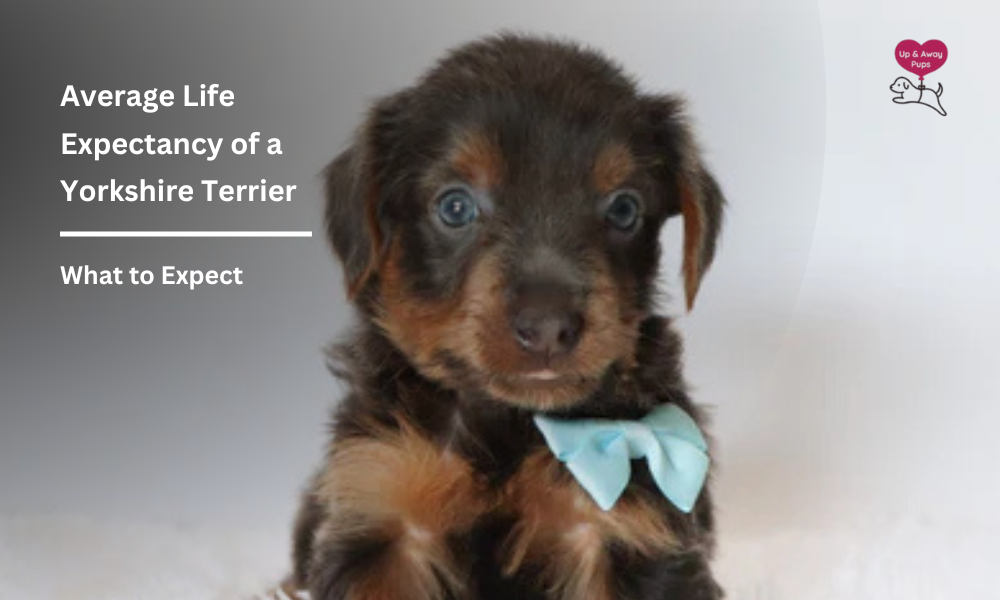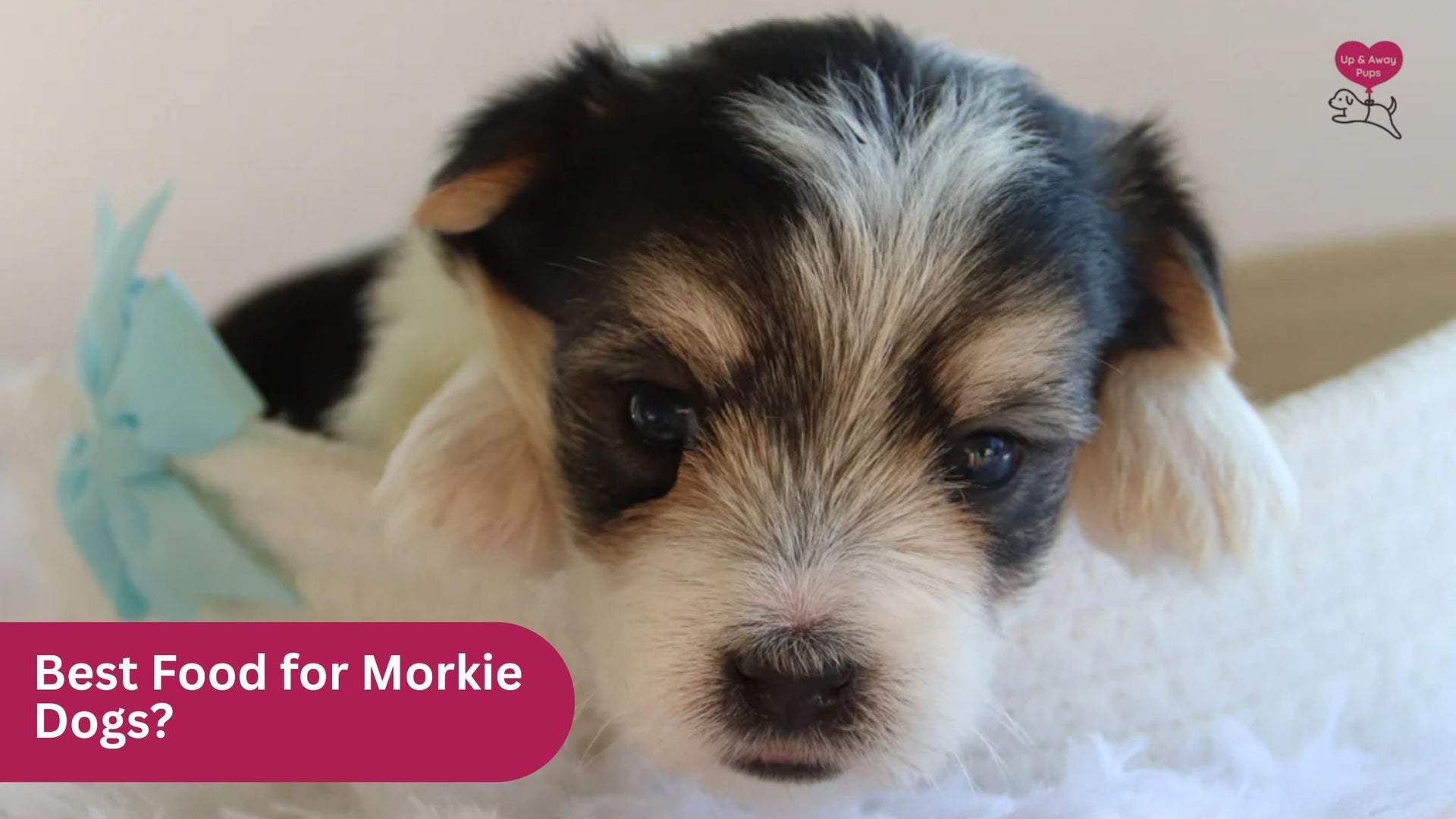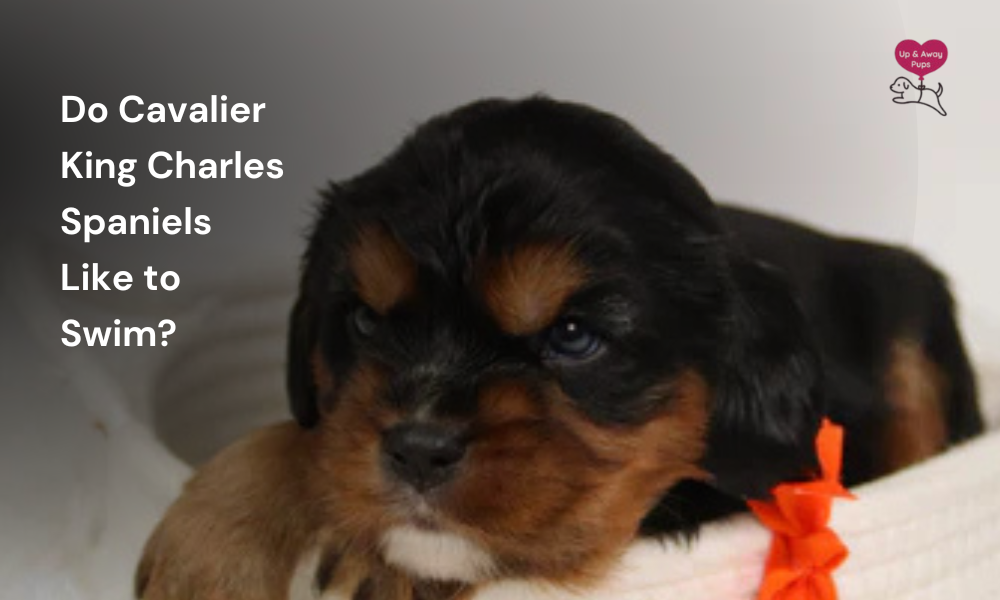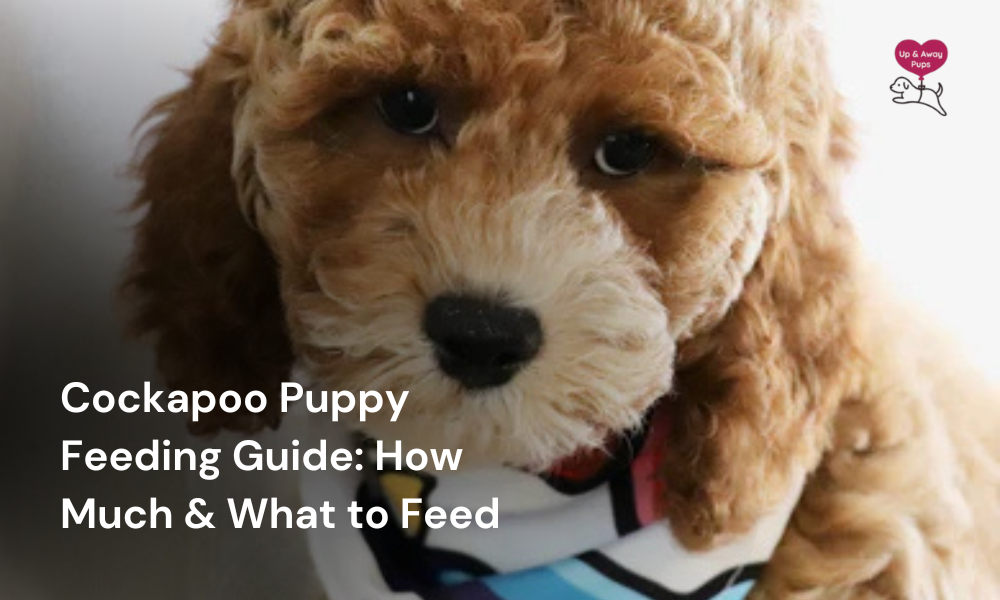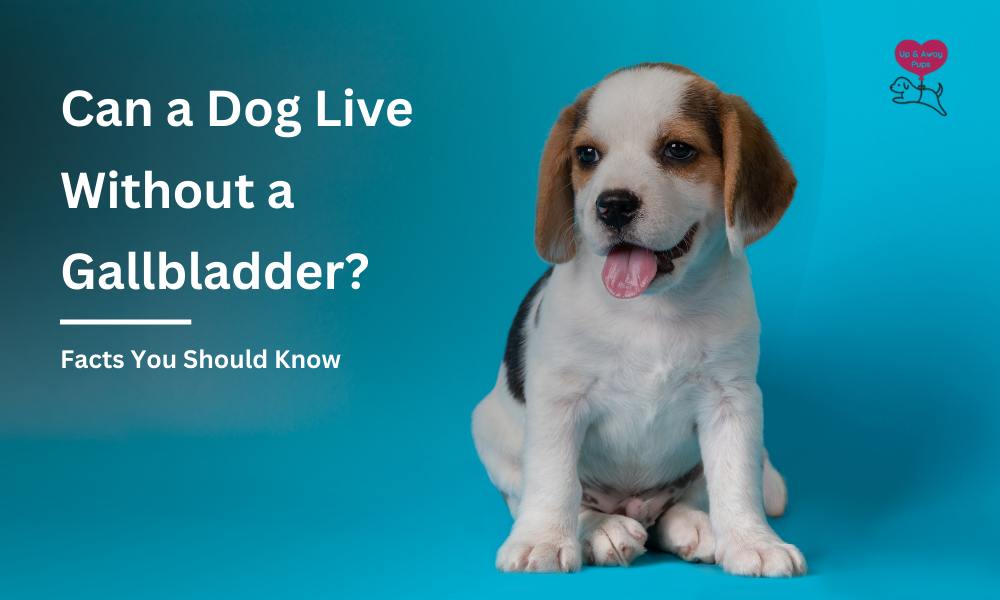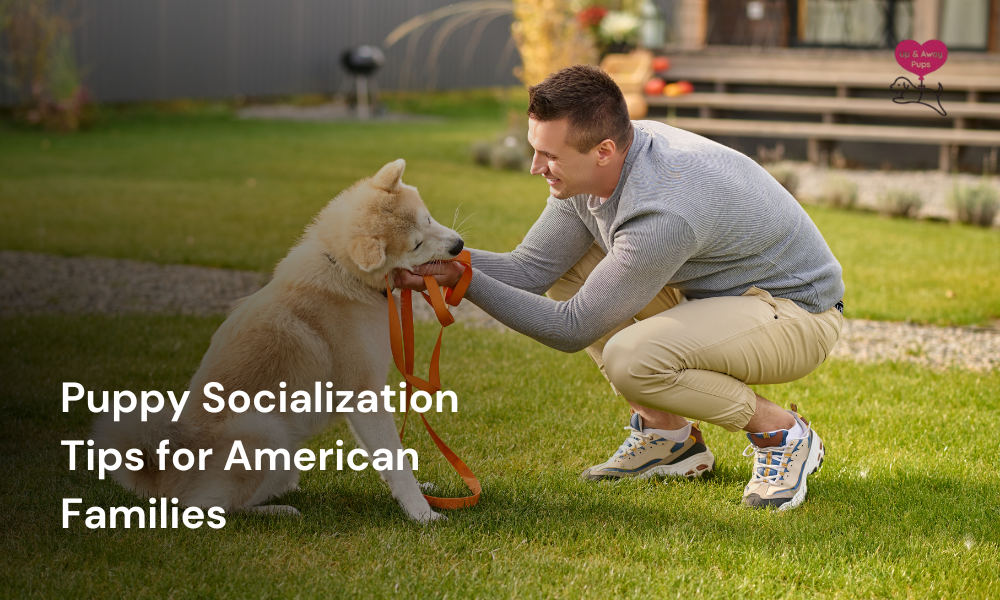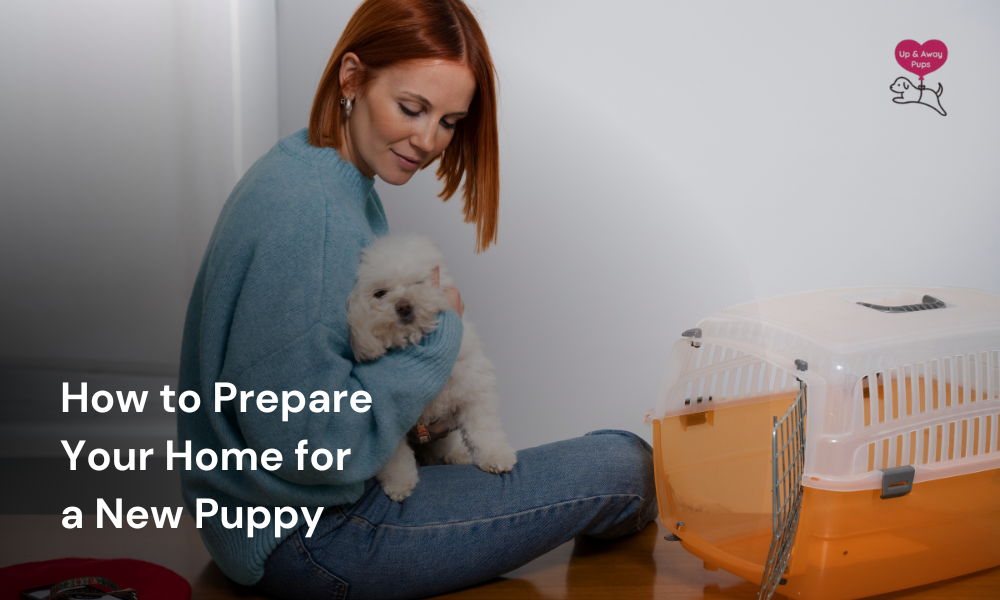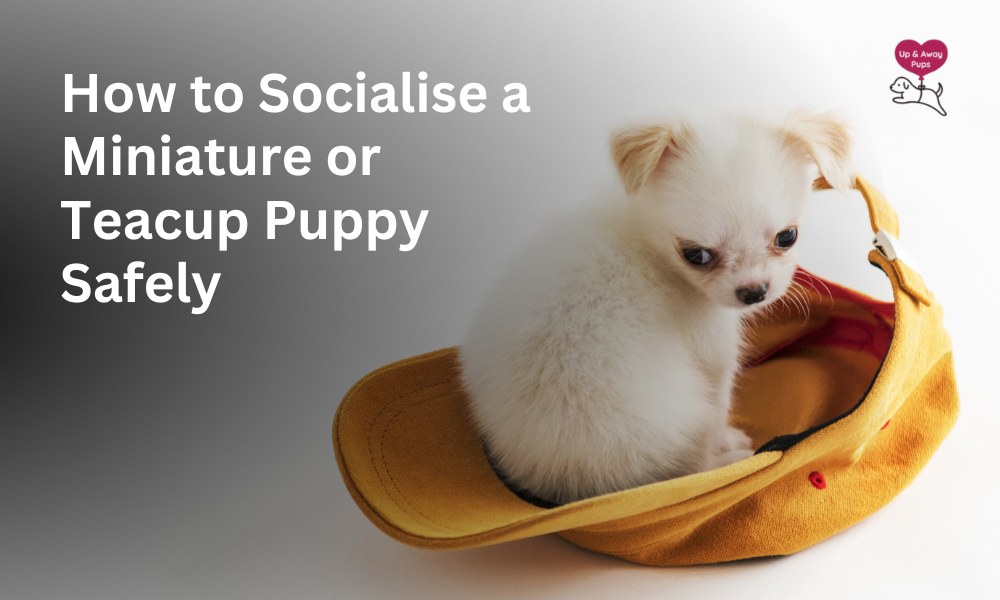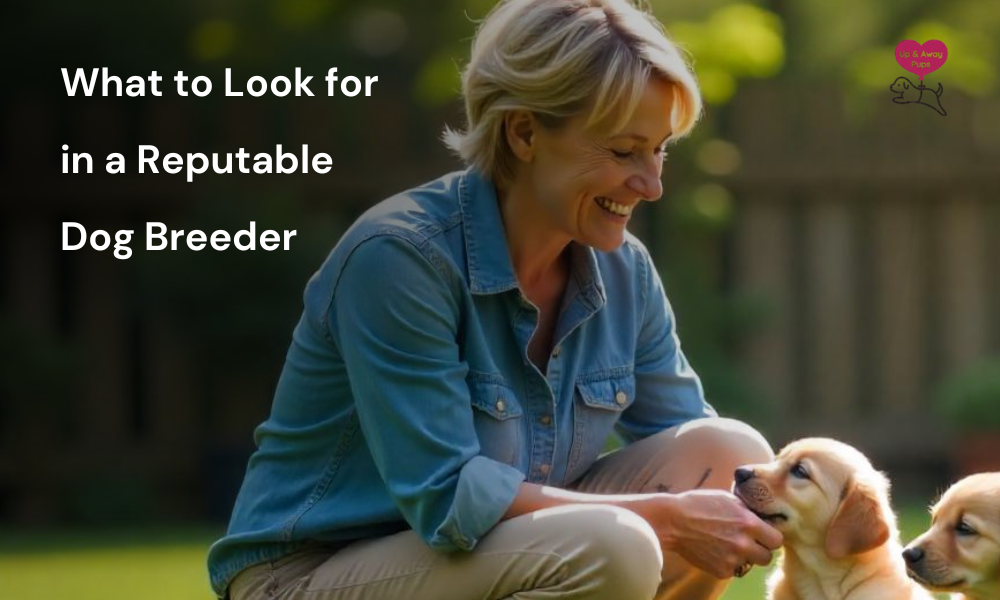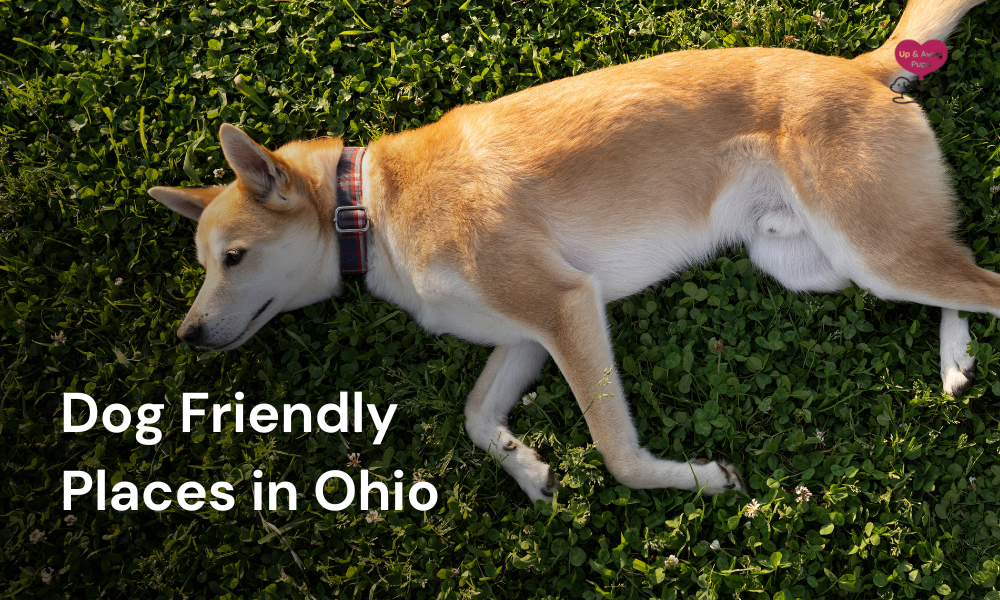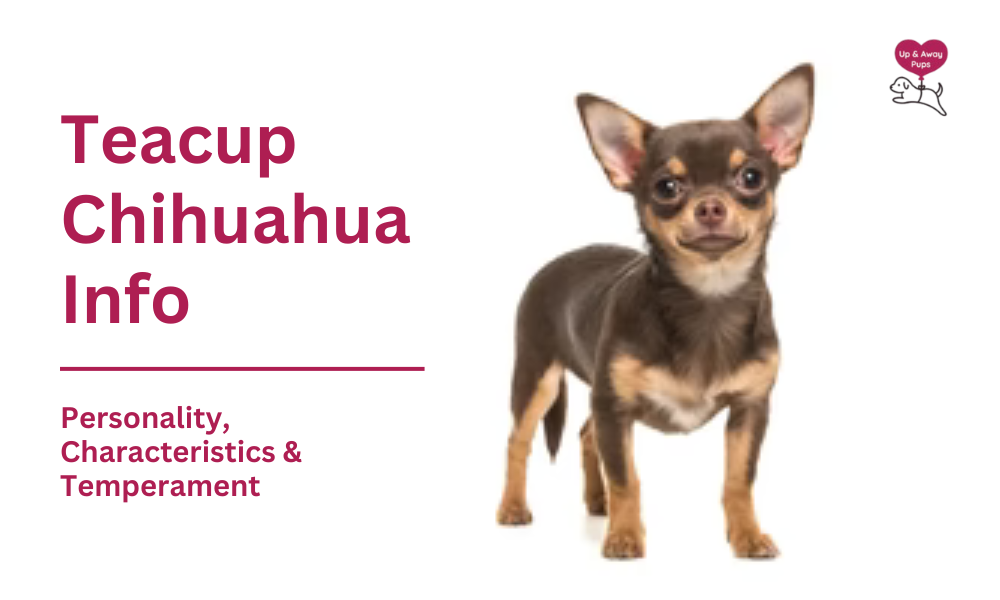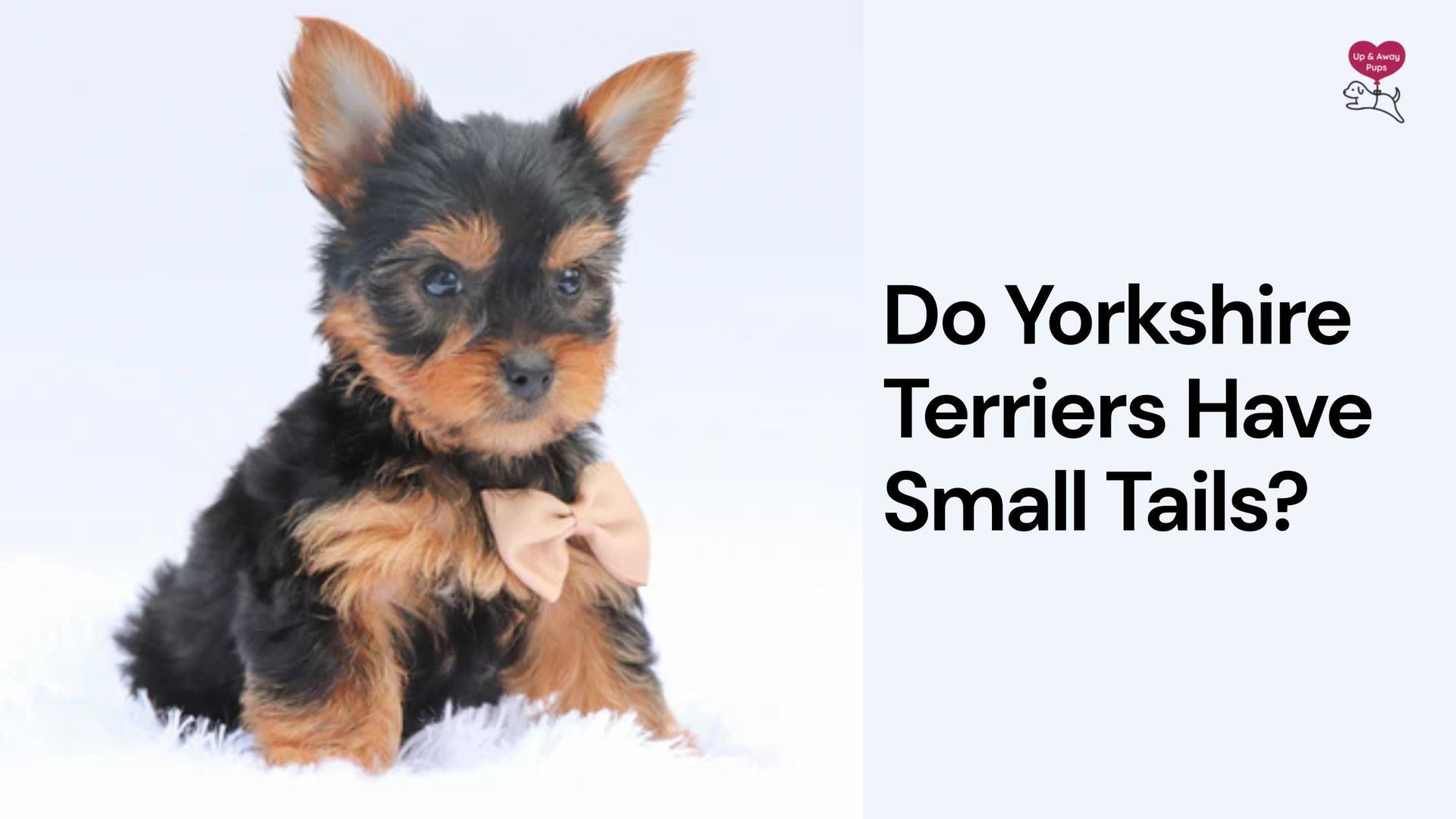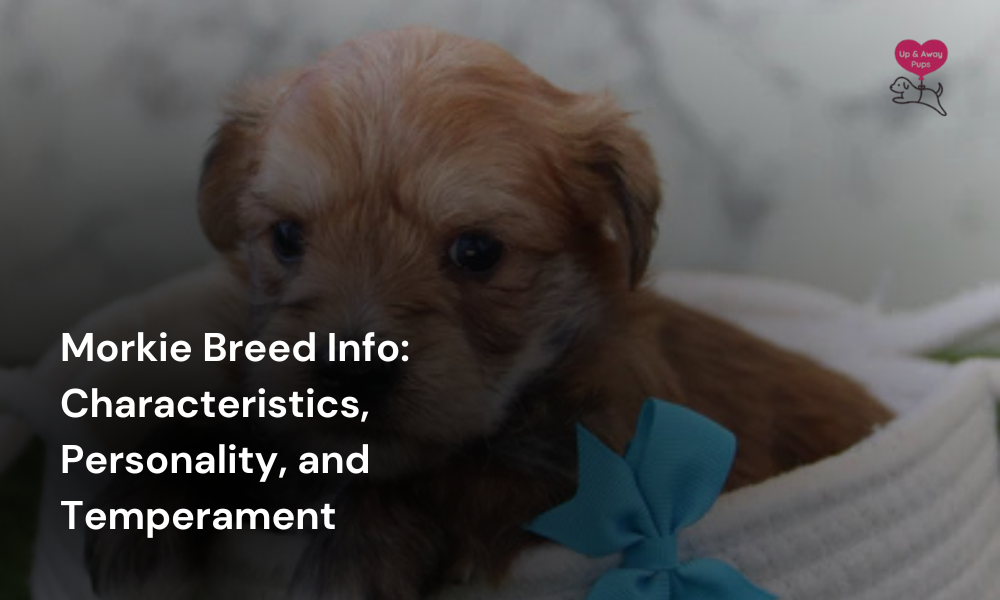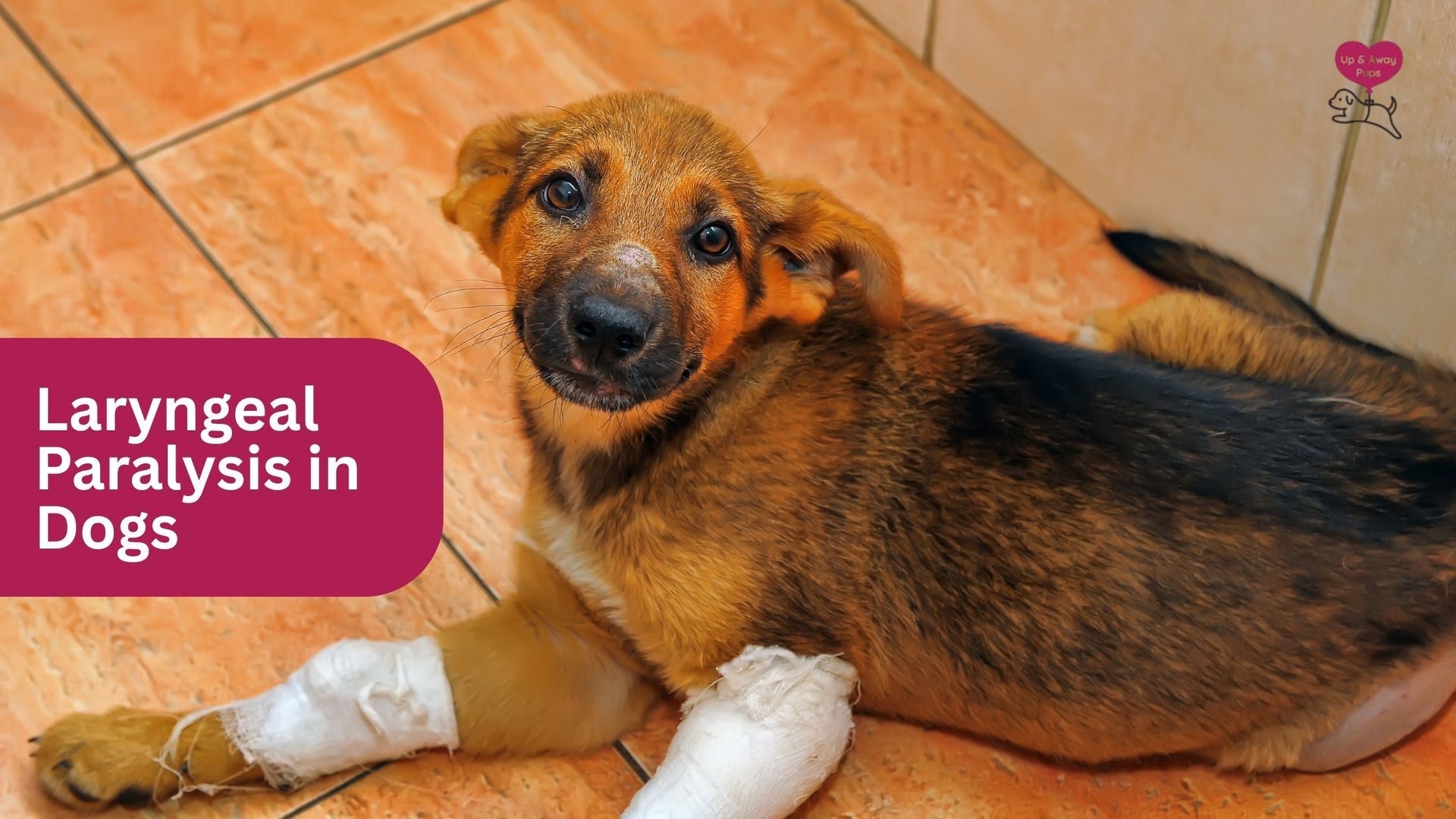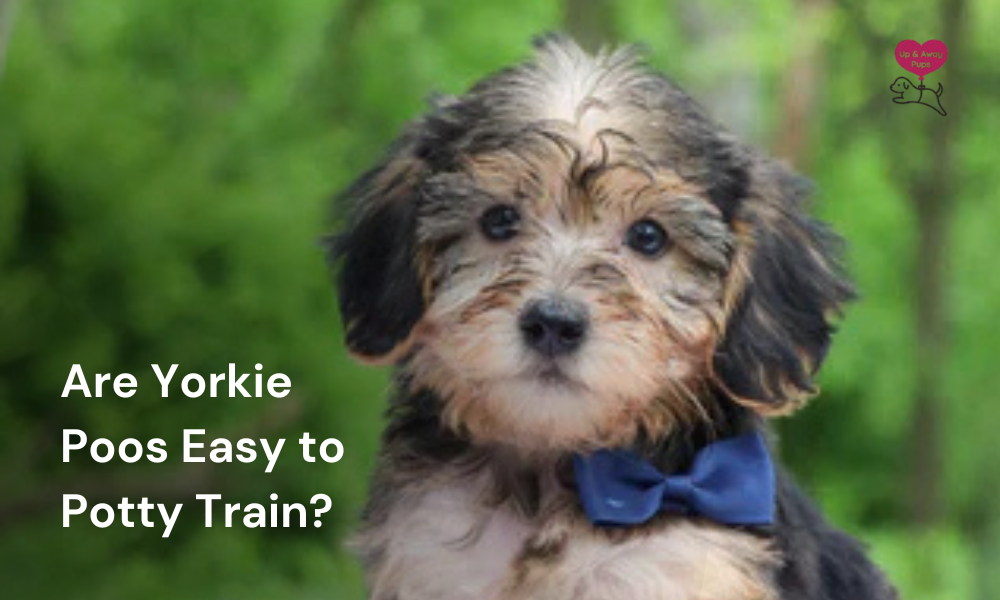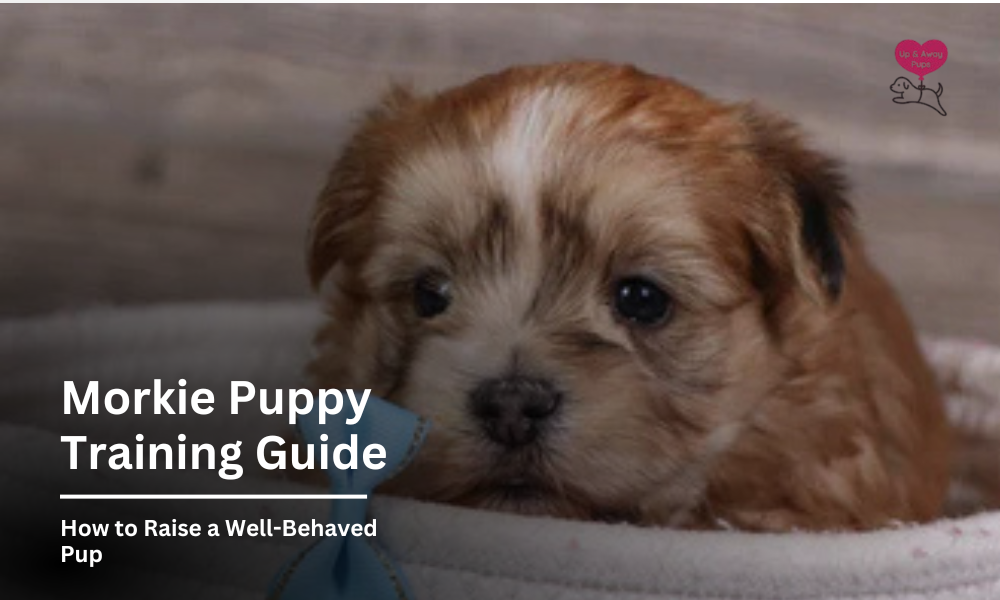The Teacup Morkie, a charming hybrid of Maltese and Yorkshire Terrier, is known for its delicate, silky coat and affectionate personality. Proper grooming is crucial for their comfort, health, and appearance. This guide covers key aspects of Morkie care, including gentle brushing routines, safe bathing, coat trimming, nail and paw maintenance, and face and ear hygiene. Essential grooming tools like soft slicker brushes, mild shampoos, and rounded scissors help keep their coat tangle-free and smooth. Following these steps strengthens the bond between owner and pup while preventing common problems such as matting, tear stains, dry skin, and rough nails. Consistent care ensures your Teacup Morkie stays confident, clean, and happy.
Puppy teething is a natural developmental phase in which young dogs replace baby teeth with adult teeth, often causing discomfort, chewing urges, and mood changes. Baby teeth emerge early, and adult teeth typically replace them between three and six months, with teething finishing by around seven months. Common symptoms include increased chewing, mild gum swelling, small blood spots, less appetite, and playful nipping. Owners can help with soothing chew toys, cooled items, softened food, gentle gum massages, brushing practice, and safe treats. Monitoring dental issues and seeking veterinary care when necessary ensures healthy oral development.
Celebrating Christmas with your puppy becomes more meaningful when you choose gifts that support their learning, comfort, and happiness. Understanding your pup’s habits energy levels, chewing tendencies, comfort needs, learning speed, and social behavior helps you select the right toys for a stress-free holiday. Interactive puzzles, durable chew toys, soft plushies, treat-dispensing balls, snuffle mats, heartbeat toys, and festive ropes all encourage healthy development and emotional security. A calm Christmas routine with gentle greetings, safe gift-opening, play breaks, and small treats ensures a joyful, confident, and memorable holiday for your puppy.
Teacup Chihuahuas are beloved for their tiny size and affectionate nature, but they require careful handling and attentive care. This guide explores their origins, expected size, growth stages, and key factors that influence development. It also highlights essential health considerations, such as fragile bones, low blood sugar, and breathing issues. Readers will learn how to support these delicate dogs through proper feeding, gentle exercise, grooming, and regular vet visits. With the right care, Teacup Chihuahuas can enjoy a safe, comfortable, and healthy life.
Teacup Chihuahuas are tiny, delicate dogs that require careful monitoring during their first year. Their growth depends on genetics, nutrition, activity, and overall health, with rapid development in the first 2–3 months and full size usually reached by 9–12 months. To ensure healthy growth, provide balanced meals, gentle supervised exercise, a safe indoor environment, routine vet visits, and consistent daily habits. Owners should watch for common issues like hypoglycemia, breathing difficulties, and fragile bones. Proper care fosters confident, happy, and healthy adult dogs.
The first 90 days with a new puppy involve excitement, adjustment, and rapid development. Early weeks focus on bonding, crate comfort, feeding routines, potty habits, and safe exploration. As the puppy grows, learning expands through simple commands, sound exposure, leash introduction, outdoor experiences, focus training, and teething support. Later weeks emphasize structured routines, stronger obedience, recall, behavior shaping, grooming, and building confidence. Common challenges include potty setbacks, mouthing, sleep disruptions, fear periods, and separation concerns. Consistency, patience, positive reinforcement, health monitoring, and guided exploration ensure a smooth, healthy start.
Puppy biting is a normal part of early development, often driven by teething, excitement, fear, or a lack of structure. Understanding these triggers helps owners respond with gentle, science-backed methods rather than punishment. Effective strategies include redirecting to chew toys, teaching bite inhibition, socializing early, keeping play calm, using cues like “settle” and “leave it,” and reinforcing good behavior consistently. Adequate exercise and enrichment also reduce frustration. Avoiding harsh corrections protects trust and prevents fear-based aggression. With patience and positive training, puppies grow into confident, well-mannered companions.
Small dog breeds are often misunderstood, but these pint-sized pups have huge hearts and personalities. Contrary to popular myths, small dogs need regular exercise, are intelligent and trainable, and make wonderful family companions when treated gently. They’re not all “yappy” lap pets many are adventurous, loyal, and full of energy. With proper care, small breeds often live long, healthy lives and bring endless joy to their owners. Discover why small dogs prove that love, courage, and happiness truly come in small packages!
Puppies aren’t just adorable, they’re natural stress relievers and happiness boosters. From lifting your mood and promoting laughter to encouraging exercise, social connection, and emotional resilience, their presence has measurable mental, emotional, and physical benefits. Daily interactions, cuddles, and playtime with a puppy can lower stress hormones, release feel-good chemicals, and bring structure and joy to your life. Discover how puppies transform homes into happier, calmer spaces and why adding one to your family could be the key to daily joy and well-being.
New puppy owners often feel anxious when their pets resist leashes. Positive reinforcement and gentle patience help puppies adjust and enjoy walks. Leash training improves safety during outings, encourages socialization, builds obedience, boosts confidence, and strengthens the bond between owner and pet. Using proper gear like comfortable leashes, harnesses, treats, and visibility aids ensures comfort and safety. Step-by-step training, from indoor practice to outdoor sessions, helps puppies adapt calmly. With consistency, rewards, and love, leash time becomes a positive, confident, and joyful experience for both puppy and owner.
Taking care of a Teacup Maltipoo involves gentle, consistent grooming to maintain its health, comfort, and adorable appearance. Regular brushing keeps the coat silky, shiny, and free of tangles, while bathing with mild, hypoallergenic shampoo preserves essential oils. Trimming around the eyes, paws, and tail ensures hygiene and comfort. Ear, eye, and nail care prevent infections and maintain posture. Using proper grooming tools and calm handling strengthens your bond. A clean, soft, and well-groomed Maltipoo reflects happiness, vitality, and love, showcasing the deep connection between owner and pet.
The holidays are a wonderful time to include your dog in the fun. From festive photos and cozy “Christmas walkies” to safe homemade treats, there are many ways to make them part of the celebration. Choose durable toys, puzzle feeders, or snuffle mats as gifts, and always prioritize safety by securing the tree, avoiding toxic plants, and keeping decorations out of reach. Provide a quiet space for your dog to relax during gatherings. Most importantly, give them love, attention, and joyful moments together—your best Christmas gift of all.
Dachshunds are not hypoallergenic, as they shed and produce dander that can trigger allergies. However, people with mild allergies may still live comfortably with them through proper care. They come in three coat types—smooth, wirehaired, and longhaired—with wirehaired Dachshunds shedding the least. Regular grooming, vacuuming, and using HEPA filters help reduce allergens at home. It’s also important to maintain the dog’s diet and consult a vet for skin health. With consistent cleaning and care, many allergy sufferers can still enjoy living happily with a Dachshund.
The holiday season feels even more magical with our furry friends around. From endless cuddles to festive photo ops, dogs fill our celebrations with love, joy, and laughter — reminding us to slow down and savor every beautiful moment together.
Teacup Maltipoos are small, adorable hybrids of Maltese and Poodle, known for their affectionate and playful personalities. Weighing just 2-5 pounds, they require special care due to their delicate size. This breed is intelligent, loving, and easy to train, making them perfect companions for families. To ensure their well-being, proper nutrition, regular grooming, and consistent training are essential. Additionally, Teacup Maltipoos need mental stimulation, safe environments, and routine vet visits to maintain their health. With the right care, they thrive as loyal and happy family pets.
Miniature Dachshunds are intelligent, independent, and full of energy, making training both challenging and rewarding. Common issues include stubbornness, excessive barking, and potty training difficulties. However, with patience, consistency, and positive reinforcement, these traits can be managed. Techniques like crate training, clicker training, and early socialization are essential for success. Mental stimulation, routine, and effective communication will help build trust and obedience. With the right approach, your Miniature Dachshund can thrive, becoming a well-behaved, confident, and loving companion.
Raising a Miniature Dachshund requires love, early training, proper nutrition, and regular exercise. Focus on their physical care, socialization, and mental stimulation to ensure they grow into healthy, confident, and well-adjusted companions. Prevent obesity, maintain joint health, and provide regular vet check-ups for a long, happy life.
Puppies bring joy but require careful care that changes with the seasons. In summer, keep puppies cool, hydrated, and avoid hot surfaces to prevent heatstroke and paw burns. Limit play during peak heat and never leave them unattended in cars. In winter, protect small or short-haired puppies from cold with coats and short outdoor visits. Year-round care includes maintaining vaccinations, parasite prevention, and mental stimulation through indoor activities. Being mindful of these seasonal needs helps keep puppies safe, healthy, and happy, ensuring you enjoy every moment with your furry friend.
Caring for small and large breed puppies differs significantly in diet, exercise, training, and health needs. Small breeds need calorie-dense food, gentle play, and early socialization to avoid behavioral issues. Large breeds require controlled growth diets, low-impact exercise, and firm training to manage their size. Health concerns also vary, with small breeds prone to hypoglycemia and large ones to joint problems. Understanding these differences helps pet parents provide proper care, ensuring puppies grow into healthy, well-behaved dogs regardless of their size or breed.
Traveling with a puppy can be both exciting and overwhelming if you're not well-prepared. From vet visits and short practice drives to packing the right essentials like food, comfort items, and a first aid kit, planning is key. Whether you're driving or flying, prioritize your pup’s safety with proper restraints and frequent breaks. Understand airline policies, avoid feeding too much before travel, and never leave your puppy unattended. With the right preparation, you can ensure a stress-free and enjoyable journey for both you and your furry friend.
Havapoos and Cavapoos are affectionate, intelligent designer breeds ideal for families or individuals. This guide compares their size, temperament, grooming needs, energy levels, and health to help you choose the right fit. While Havapoos are more energetic and playful, Cavapoos are calmer and gentler. Both offer loyal companionship and thrive in loving, attentive households.
Dachshunds aren't hypoallergenic, but people with mild allergies may still live comfortably with them especially wirehaired types. This guide explains coat types, common allergens, and practical steps like grooming, cleaning, and using HEPA filters to reduce symptoms. With the right care and allergy management, owning a Dachshund can still be possible for sensitive individuals.
Boarding an aggressive dog can be stressful, but with the right approach, it's manageable. This guide covers how to understand your dog’s triggers, find specialized facilities, assess staff training, evaluate safety measures, and request trial stays. It also highlights the importance of reviews and alternative care options, ensuring your dog’s well-being and your peace of mind while you're away.
Grooming is essential for your puppy’s health and happiness. Regular grooming helps prevent skin issues, control shedding, and check for health problems. Bathing should be done every 4-6 weeks to avoid stripping natural oils. Brushing frequency depends on coat type, with short-haired breeds requiring weekly brushing and long-haired breeds needing more frequent care. Nail trimming should be done every 3-4 weeks. Additionally, ear cleaning, dental care, and eye maintenance are crucial. Establishing a positive grooming routine will ensure your puppy stays comfortable, healthy, and well-groomed.
Yorkie Poos and Morkies are small, lovable dogs with very different needs and personalities. Yorkie Poos are playful, intelligent, and more independent, while Morkies are affectionate, clingy lap dogs. Both breeds require regular grooming and care but thrive in loving homes. Yorkie Poos suit active households; Morkies do best with constant companionship. Health concerns exist for both, but a good routine ensures happy, healthy lives. Choosing the right pup depends on your lifestyle, time, and the type of bond you’re looking for.
Yorkshire Terriers are small but mighty dogs with an average lifespan of 11 to 16 years. Their petite size contributes to longevity, though common health issues like dental disease, tracheal collapse, patellar luxation, and liver shunts may affect quality of life. Owners can help Yorkies live longer by keeping them at a healthy weight, maintaining dental hygiene, providing mental stimulation, and scheduling regular vet visits. With responsible breeding, preventive care, and consistent habits, Yorkies thrive well into their senior years, offering years of love.
Morkies are the perfect mix of Maltese and Yorkie—tiny, adorable, and full of energy. This guide covers everything you need to feed them right and keep them healthy.
Cavalier King Charles Spaniels can be left alone, but their history as companion dogs means they thrive on human company. Adult Cavaliers may handle short periods alone, while puppies and seniors need more care and shorter breaks. Signs of separation distress include barking, chewing, or pacing. With training, enrichment toys, exercise, and predictable routines, Cavaliers can adapt to alone time more easily. Outside help like dog walkers or daycare can also make a difference. Preparation and gradual training ensure your Cavalier stays content and stress-free.
Cavalier King Charles Spaniels aren’t natural-born swimmers, but with gentle introduction, some may enjoy splashing in pools, lakes, or creeks. Their personalities, early exposure, and health conditions play a big role in whether they take to water. This guide covers safe introduction techniques, health precautions, recommended gear, and signs your Cavalier is enjoying the swim. While swimming can be fun and enriching, it’s not essential for every dog—what matters most is keeping water activities safe, short, and enjoyable.
Feeding a Cockapoo puppy the right way is key to ensuring healthy growth, energy, and long-term well-being. This guide explains their unique nutritional needs, from proteins and fats to vitamins, minerals, and hydration. You’ll learn how to balance portion sizes, choose between dry and wet food, and adjust meals as your pup grows from 8 weeks to adulthood. With practical feeding schedules, transition tips, and vet-backed advice, this guide helps you provide the best start in life for your Cockapoo companion.
Maltipoos are affectionate, intelligent, and playful companions known for their loving personalities. With proper care, they typically live long and healthy lives of 12–15 years. While they may face common small-breed health concerns such as allergies, dental issues, or ear infections, most are easy to manage with preventative care, quality nutrition, and regular vet visits. At Up & Away Pups, Maltipoos are raised with a focus on health, temperament, and early training, ensuring families enjoy years of joy, cuddles, and unconditional love.
Dogs are remarkably resilient, even when living without a gallbladder. This small organ stores bile to aid fat digestion, but when removed, the liver still produces bile, though less efficiently. Dogs may need diet adjustments, especially low-fat meals, and smaller, frequent feedings during recovery. Signs of gallbladder issues include vomiting, abdominal pain, weight loss, and lethargy. With surgery, proper diet, hydration, and veterinary care, most dogs adapt well and live long, healthy lives. Regular check-ups and mindful weight management further support recovery.
Socializing your puppy is essential for building confidence, reducing fear, and preventing behavioural issues. Like babies, puppies need early exposure to people, sounds, places, and other animals—ideally between 3 to 14 weeks of age. Start small, use positive reinforcement, and focus on everyday experiences like meeting humans, riding in cars, and hearing household noises. Avoid overwhelming situations or risky areas before vaccinations are complete. With patience, gentle guidance, and consistency, socialization sets the foundation for a calm, friendly, and well-adjusted adult dog your family will cherish.
Cavalier King Charles Spaniels are not hypoallergenic and may trigger allergies due to their shedding and dander. While their affectionate nature makes them lovable companions, allergy-sensitive individuals should consider the challenges. This blog explores what hypoallergenic really means, explains why Cavaliers aren’t considered allergy-friendly, and offers practical tips for managing allergens at home. It also covers grooming routines, environmental adjustments, and what to expect if you live with mild to moderate pet allergies. Despite the risks, many still choose Cavaliers for their loyalty, gentle temperament, and social personality.
Cavalier King Charles Spaniels typically live 9 to 14 years, with their lifespan influenced by genetics, care, and health conditions. This blog explores common health concerns such as Mitral Valve Disease, Syringomyelia, ear infections, and obesity, along with early warning signs. You’ll also find practical tips for improving your Cavalier’s quality of life, from diet and exercise to regular vet checkups and responsible breeding. Whether you already own a Cavalier or are considering one, this guide helps you support their health and happiness at every stage.
This in-depth guide explores the leading causes of death in Yorkshire Terriers (Yorkies), covering everything from respiratory issues and trauma to breed-specific health risks. Learn how to prevent common conditions in both puppies and adults, boost your Yorkie's lifespan with practical care tips, and spot early warning signs. Ideal for first-time owners or anyone wanting to keep their Yorkie healthy and safe.
Bringing home a teacup puppy is a heartwarming experience but their growth is fast, delicate, and unique. This blog walks you through a week-by-week teacup puppy growth chart, explaining what to expect from birth through 12 months. You’ll learn how to monitor their size, spot health red flags, and understand their developmental milestones. It also covers common issues like hypoglycemia, fragile bones, and delayed teething. Whether you're a first-time puppy parent or planning to adopt a tiny companion, this guide helps you raise a happy, healthy teacup puppy with confidence.
Teacup and miniature puppies may be tiny, but raising them into confident, well-socialized dogs takes intentional care. Early socialization—before 16 weeks—is key, but small breeds need gentle, safe introductions to people, sounds, and environments. Avoid overstimulation, prioritize safety, and reward calm behavior. Introduce other pets slowly, encourage independence, and be consistent with handling. While it’s tempting to carry them everywhere, your goal is to raise a balanced, confident companion. With patience and the right approach, your little dog can grow into a calm and friendly adult.
Choosing a reputable dog breeder is about more than just cuteness and cost. A responsible breeder prioritizes health with clear vet records, genetic screening, and a clean, social environment. They’re transparent, ask you questions, offer ongoing support, and provide contracts and health guarantees. You should be able to learn about the puppy’s parents, see where they’re raised, and check reviews or references. Ethical breeders also work with national or licensed associations. Taking the time to choose the right breeder ensures your puppy starts life healthy, happy, and well-cared for.
Splooting is when a dog lies flat on its belly with one or both hind legs stretched behind—an adorable and common behaviour seen in breeds like Corgis, Bulldogs, and Shih Tzus. Dogs sploot to cool down, stretch, or simply because it feels good. It’s usually harmless and a sign that your dog is relaxed. However, if splooting becomes frequent or your pup struggles to get up, it could indicate joint issues like hip dysplasia or arthritis. In such cases, a vet check-up is recommended. Otherwise, enjoy the cuteness—it’s perfectly normal!
Tiny but bursting with personality, the teacup Chihuahua is a bold and loving companion that thrives on attention and a calm environment. Though not a separate breed, this miniature version of the Chihuahua is known for its loyalty, sass, and intelligence. They’re perfect for apartment living but require special care due to their delicate size and health sensitivities. With proper training, early socialization, and a gentle home, teacup Chihuahuas can live happy, fulfilling lives. Just be ready for a big personality in a tiny package!
Ohio is a top destination for dog lovers, offering scenic parks, pet-friendly cafes, and welcoming hotels across the state. From hiking trails at Hocking Hills to dog beaches in Cleveland and cozy stays like Graduate Columbus, there's something for every pup and their human. Enjoy indoor dog cafes, outdoor beer gardens, and nature-filled adventures all tailored for you and your furry companion. Whether you're exploring for the day or staying the weekend, Ohio makes dog-friendly travel easy and fun.
Training your puppy with the right commands early on sets the foundation for a well-behaved, happy dog. This guide covers 10 essential puppy commands every dog should learn, from basic obedience like “Sit” and “Stay” to important safety cues like “Come” and “Leave it.” Each command helps your pup understand expectations, improves communication, and strengthens your bond. Whether you’re a first-time dog owner or brushing up on the basics, mastering these key commands can lead to a lifetime of good habits and joyful companionship.
Yorkies aren’t born with short tails those tiny stubs are usually the result of tail docking. This cosmetic procedure is done just days after birth, mainly for tradition or show standards. While a rare gene mutation can cause a natural bobtail, most Yorkies have full-length tails at birth. Tails help dogs communicate and maintain balance, so docking affects more than just appearance. Though still legal in the U.S., it’s banned in many countries and discouraged by animal welfare advocates.
Morkies, a charming mix of Maltese and Yorkshire Terrier, are tiny dogs with outsized personalities. Weighing just 4 to 8 pounds, they are affectionate, loyal, and often clingy, forming deep bonds with their owners. While they thrive on companionship and attention, Morkies can be vocal, protective, and prone to separation anxiety if left alone too long. They inherit a sweet, loving nature from the Maltese and a bold, stubborn streak from the Yorkie. Daily exercise, mental stimulation, and consistent training are key to managing their energy and behavior. Grooming is a commitment due to their silky coat. Though small, they can live harmoniously with other pets when socialized properly. Ideal for loving homes that can match their emotional and care needs, Morkies are loyal sidekicks who are full of sass, love, and charm.
Laryngeal paralysis is a serious condition that affects a dog’s ability to breathe due to weakened or paralyzed muscles in the larynx. It’s most common in large, older dogs like Labradors and Golden Retrievers. Early signs include noisy breathing, a weak bark, and exercise intolerance. Though it’s not curable, the condition is manageable through lifestyle changes, medication, or surgery. Timely diagnosis and proper care can help affected dogs live comfortably and safely.
Yorkie Poos are intelligent and eager to please, which makes them fairly easy to potty train with consistency and patience. Their small size means they need frequent potty breaks, especially as puppies. Creating a routine, using crate training, and rewarding good behavior can speed up the process. Challenges like stubbornness, stress, and indoor accidents are normal but manageable. Most Yorkie Poos can be house trained in 3 to 6 months with the right approach. Starting early, staying consistent, and understanding their needs is key to success.
Teacup Teddy Bear dogs are beloved for their cuddly size, gentle personality, and strong bond with their owners. Perfect for apartments or small spaces, these pint-sized pups love to snuggle and stay close, making them exceptional lap dogs. Their low-shedding coats and calm demeanor also make them a great choice for families, singles, and seniors alike. This blog explores why they thrive as companions and what makes them so irresistible. If you’re looking for a loyal and loving pet, a teacup Teddy Bear dog could be your perfect match.
Training a Morkie puppy requires patience, consistency, and understanding their unique mix of Maltese affection and Yorkshire Terrier spirit. This guide covers essential tips such as establishing a gentle but firm leadership bond, managing tantrums, effective potty and crate training, and teaching leash manners. It also emphasizes using balanced rewards, reading your puppy’s body language, and handling setbacks calmly. With the right approach, you’ll build a strong, trusting relationship that turns your playful Morkie into a well-behaved, confident companion.
